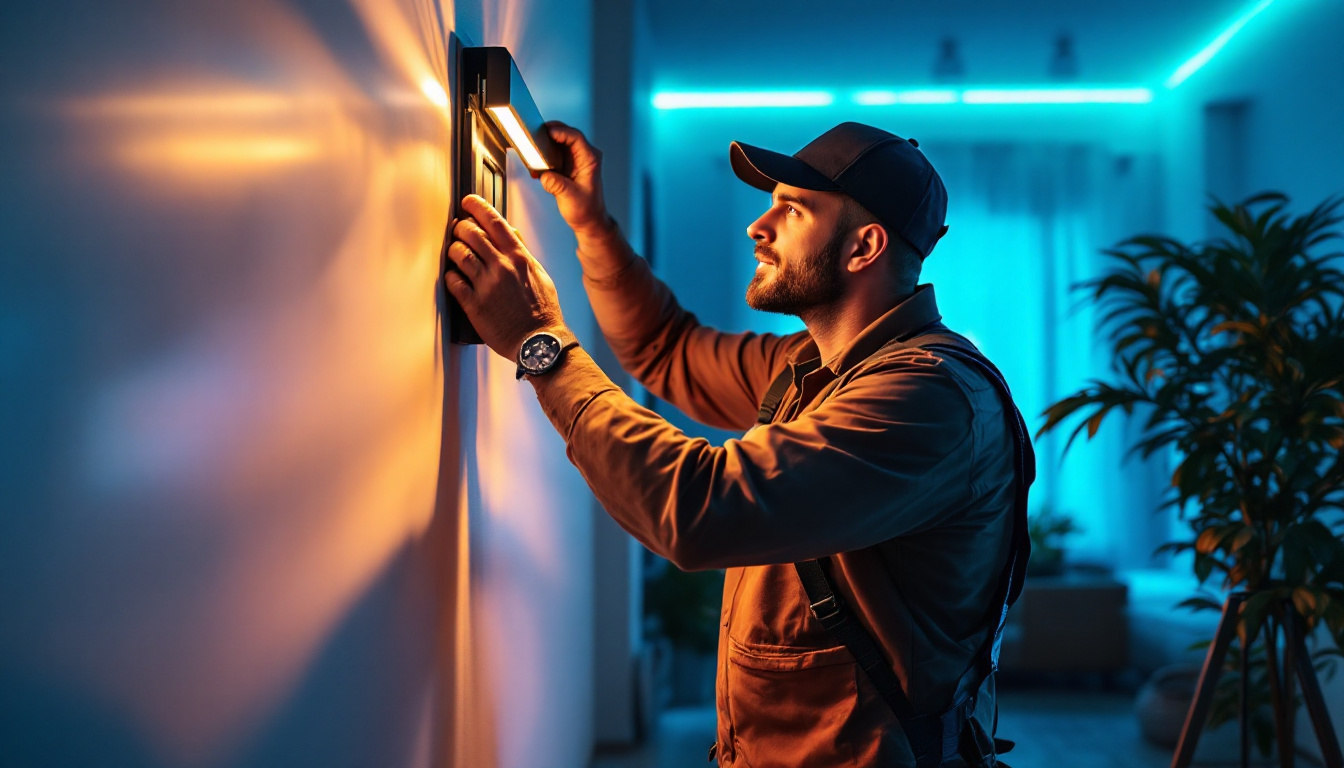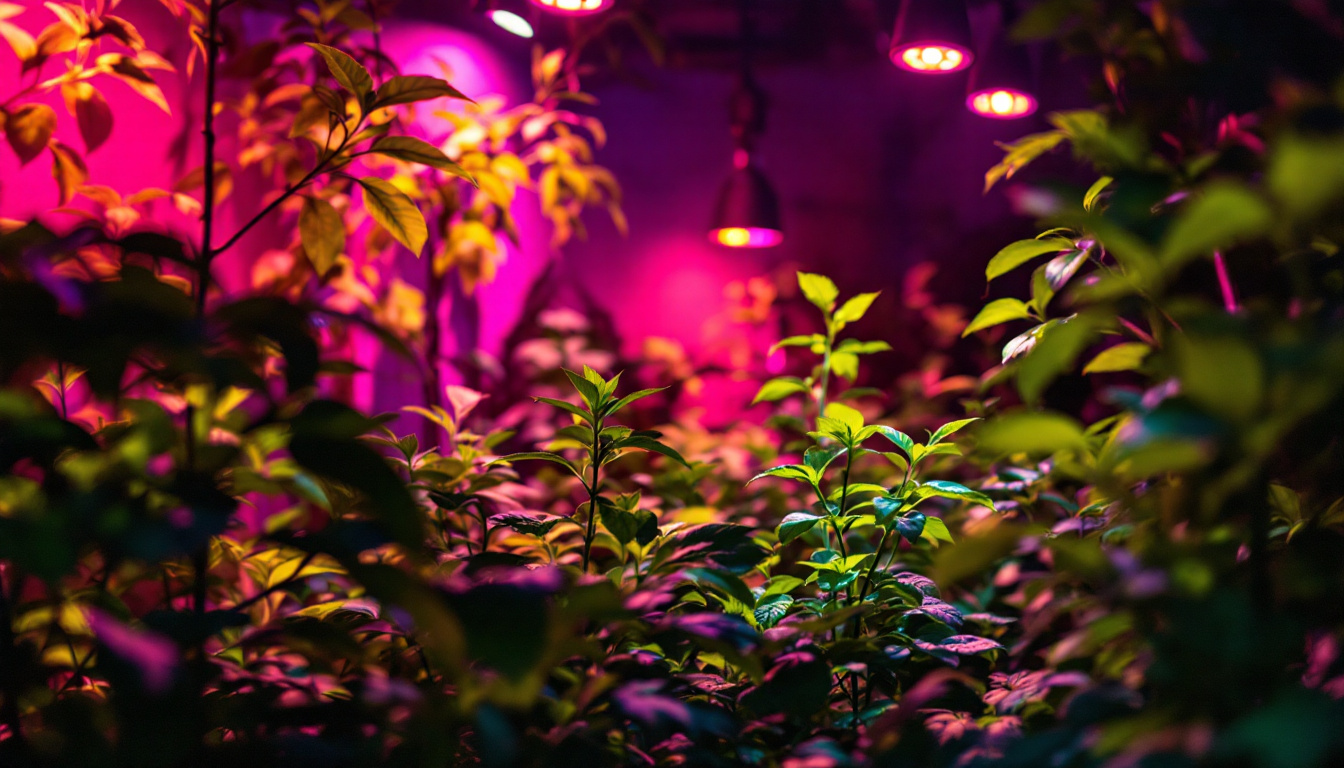
In the ever-evolving world of lighting design, indoor LED lights have emerged as a game-changer. For lighting contractors, mastering the intricacies of LED technology is essential to stay competitive and deliver exceptional results for clients. This article delves into the nuances of indoor LED lighting, providing insights that can help contractors enhance their expertise and service offerings.
LED, or Light Emitting Diode, technology has revolutionized the way we illuminate indoor spaces. Unlike traditional incandescent or fluorescent bulbs, LEDs convert electricity directly into light, offering numerous advantages in efficiency and longevity.
One of the standout features of LED lights is their energy efficiency. They consume significantly less power compared to incandescent bulbs, which translates to lower energy bills for clients. Additionally, LEDs have a longer lifespan, often lasting up to 25,000 hours or more. This longevity reduces the frequency of replacements, saving both time and money.
Lighting contractors can leverage these benefits by educating clients on the long-term savings associated with LED installations. By highlighting the reduced maintenance costs and energy consumption, contractors can position themselves as knowledgeable professionals who prioritize client satisfaction. Furthermore, the environmental impact of switching to LED technology cannot be overstated. By using less energy, LEDs contribute to a decrease in greenhouse gas emissions, making them a more sustainable choice for eco-conscious consumers. This aspect can be particularly appealing to businesses looking to enhance their corporate social responsibility profile.
Another critical aspect of LED technology is the range of color temperatures available. From warm white to cool daylight, LEDs can create various atmospheres tailored to different spaces. Understanding the psychology of color temperature can help contractors recommend the most suitable options for residential or commercial environments.
Moreover, the quality of light produced by LEDs is often superior to traditional lighting solutions. With advancements in technology, LEDs now offer better color rendering, which is essential in settings such as art galleries, retail spaces, and homes where aesthetics play a significant role. The ability to choose specific color temperatures also allows for enhanced mood setting; for instance, warmer tones can create a cozy and inviting atmosphere in living spaces, while cooler tones can promote alertness and productivity in office environments. As a result, contractors should consider not only the functional aspects of lighting but also how different color temperatures can influence the overall experience of a space.
Mastering indoor LED lighting goes beyond understanding the technology; it involves creative design and strategic placement. Effective lighting design can transform a space, enhancing its functionality and aesthetic appeal. The versatility of LEDs allows for innovative approaches, enabling designers to experiment with different styles and atmospheres. From cozy living rooms to vibrant commercial spaces, the right LED setup can evoke emotions and set the tone for any environment.
layered lighting is a crucial concept in interior design. It involves combining ambient, task, and accent lighting to create a well-balanced illumination scheme. For contractors, implementing layered lighting with LEDs can elevate a project from ordinary to extraordinary. This technique not only improves visibility but also adds depth and dimension to a room, making it feel more inviting and dynamic.
Ambient lighting provides overall illumination, while task lighting focuses on specific areas where activities occur, such as reading or cooking. Accent lighting, on the other hand, highlights architectural features or artwork. By utilizing various types of LED fixtures—such as recessed lights, pendant lamps, and wall sconces—contractors can achieve a harmonious lighting design that meets the needs of their clients. Additionally, the use of dimmers can enhance the layered approach, allowing for adjustments based on the time of day or the desired mood, further enhancing the versatility of the space.
With the rise of smart home technology, integrating smart LED lighting solutions into projects is increasingly important. Smart LEDs allow users to control their lighting remotely, adjust brightness, and even change color temperatures through mobile apps or voice commands. This level of control not only adds convenience but also promotes energy efficiency, as users can easily turn off lights that are not in use or set schedules to optimize their lighting needs.
Contractors should familiarize themselves with various smart lighting systems and their compatibility with existing home automation setups. By offering smart lighting solutions, contractors can provide added value to clients who seek convenience and modernity in their living spaces. Furthermore, the integration of smart lighting can enhance security features, allowing homeowners to simulate occupancy when they are away, thereby deterring potential intruders. As the demand for smart home features continues to grow, staying informed about the latest advancements in LED technology will position contractors as leaders in the field, ready to meet the evolving needs of their clients.
Successful installation of indoor LED lights requires a solid understanding of best practices. Proper installation not only ensures optimal performance but also enhances the safety and longevity of the lighting system.
When installing LED lights, it is crucial to consider the electrical requirements. LEDs typically operate on low voltage, and using the correct transformer is essential to avoid flickering or dimming issues. Contractors should also be aware of the importance of proper wiring to prevent overheating and potential hazards.
Additionally, understanding the load capacity of circuits is vital. Overloading circuits can lead to failures or even fire hazards. By conducting thorough assessments of existing electrical systems, contractors can ensure safe and efficient installations. It is also advisable to use high-quality connectors and junction boxes that comply with local electrical codes, as this can further enhance the safety and reliability of the installation. Regular inspections and maintenance of the electrical components can prevent future issues and extend the lifespan of the lighting system.
Another critical aspect of installation is the placement and spacing of fixtures. Properly positioning LED lights can significantly impact the quality of light in a room. For example, in a kitchen, task lighting should be strategically placed over countertops and workspaces to provide adequate illumination.
Contractors should also consider the beam angle of LED fixtures, as this affects how light is distributed. A narrow beam angle is ideal for accent lighting, while a wider beam angle works best for ambient lighting. By carefully planning the layout, contractors can create a balanced and functional lighting scheme. Furthermore, it is essential to take into account the color temperature of the LEDs, which can influence the mood and functionality of a space. Warmer tones are often preferred in living areas for a cozy atmosphere, while cooler tones can enhance focus and productivity in workspaces. By integrating these considerations into the design, the overall aesthetic and utility of the environment can be significantly improved.
Despite the numerous benefits of LED lighting, contractors may encounter challenges during installation and design. Understanding these common issues can help contractors navigate potential pitfalls and deliver successful projects.
Flickering is a common problem that can arise with LED lights, often caused by incompatible dimmers or poor-quality drivers. To address this, contractors should ensure that all components of the lighting system are compatible and of high quality. Using dimmers specifically designed for LEDs can prevent flickering and provide smooth dimming capabilities.
Additionally, educating clients about the importance of using compatible fixtures and controls can help mitigate future issues. Providing guidance on selecting the right products can enhance the overall client experience.
While LEDs generate less heat than traditional bulbs, they still require proper heat management to ensure optimal performance. Poor heat dissipation can lead to reduced lifespan and efficiency. Contractors should pay attention to the thermal management of LED fixtures, ensuring they are installed in well-ventilated areas and using fixtures designed with heat sinks.
By addressing heat management proactively, contractors can enhance the longevity and reliability of their installations, ultimately leading to satisfied clients.
The lighting industry is continually evolving, with new technologies and design trends emerging regularly. For lighting contractors, staying informed about these changes is crucial for maintaining a competitive edge.
Participating in workshops, seminars, and online courses can help contractors stay abreast of the latest advancements in LED technology and design principles. Many manufacturers offer training programs that cover product specifications, installation techniques, and design strategies.
By investing in continuing education, contractors can enhance their skill sets and offer clients the most up-to-date solutions. This commitment to professional development can also foster trust and credibility within the industry.
Networking with other professionals in the lighting industry can provide valuable insights and opportunities for collaboration. Joining industry associations or attending trade shows can facilitate connections with manufacturers, designers, and other contractors.
Collaborative projects can lead to innovative solutions and broaden the scope of services offered. By fostering relationships within the industry, contractors can enhance their reputation and expand their client base.
Mastering indoor LED lights is essential for lighting contractors looking to excel in their field. By understanding the technology, employing effective design strategies, adhering to installation best practices, and staying updated with industry trends, contractors can provide exceptional service and value to their clients.
As the demand for energy-efficient and aesthetically pleasing lighting solutions continues to grow, contractors who embrace the potential of LED technology will undoubtedly find themselves at the forefront of the industry. With the right knowledge and skills, lighting contractors can illuminate spaces beautifully and sustainably, ensuring satisfaction for both themselves and their clients.
Ready to elevate your lighting projects with the finest LED solutions? At LumenWholesale, we’re committed to equipping you with the highest quality, spec-grade lighting products at prices that respect your budget. Say goodbye to local distributor markups and hello to our unbeatable wholesale rates. Our extensive selection not only meets but exceeds industry standards, ensuring that every installation shines with reliability and performance. Plus, with free shipping on bulk orders, you can stock up on premium lighting without any hidden fees or compromises. Don’t miss out on the perfect combination of quality, affordability, and convenience. Wholesale Lighting at the Best Value is just a click away—transform your lighting expertise into luminous success with LumenWholesale.

Discover the essential insights lighting contractors need to know about 8ft fluorescent tubes.

Discover how plant LED lights are revolutionizing the lighting industry with their energy efficiency, sustainability, and innovative technology.

Discover the must-have tools every lighting contractor needs with Shoplight.

Discover the pivotal role bright flush mount ceiling lights play in modern lighting projects.